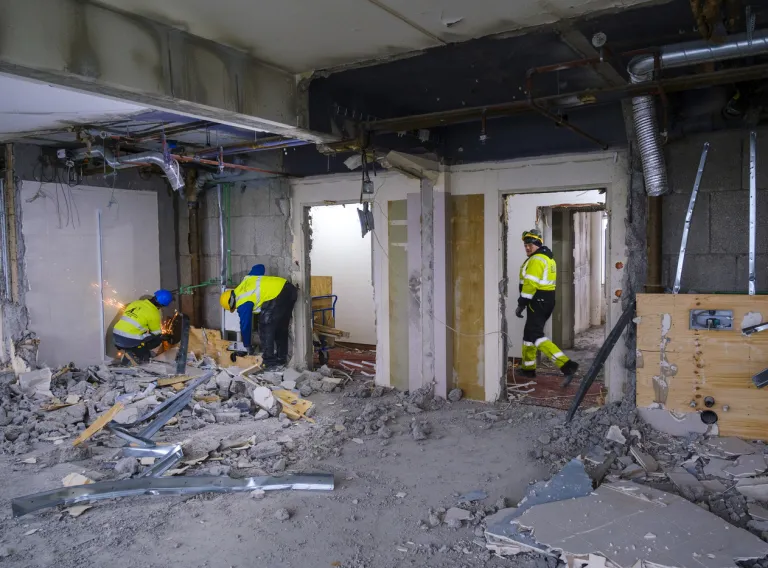
Ingibjörg Ólafsdóttir was manager of the Radisson Blu Saga Hotel from 2012 until it closed in 2020. She now works for the University of Iceland, where her responsibilities include helping to prepare for the move of the School of Education and other units to Saga. It is safe to say that few people know the building and its history as well as Ingibjörg. "I was following the sale of the building," smiles Ingibjörg, who says she is excited to continue to be involved in managing the building and preserving its history and culture. "The Saga Hotel wasn't just a hotel. It was a cultural institution that had been home to all kinds of activities. It was the first big hotel to open in Iceland. Loftleiðir Hotel opened shortly afterwards, followed by Esja Hotel. Originally, the Saga Hotel was intended to provide accommodation for farmers when they were in town. It developed into this large building and that's why it's generally known as the 'Farmers' Hall'.
The Saga Hotel opened in 1962 and was designed by Halldór H. Jónsson, the well-known architect behind many of Reykjavík's iconic buildings from that era. There was actually a book published recently about Halldór's work, including the Saga Hotel. The building has so much historical and cultural significance. Halldór also selected all the furniture, strongly influenced by the Royal Hotel in Copenhagen, which was designed by Arne Jacobsen."
What was the Saga Hotel like in those early days?
"It was the only hotel that could accommodate important foreign visitors. Heads of state and artists stayed in the presidential suite, which was the most luxurious accommodation available at the time. This was in the 60s – glamour and long dresses. Nordic and European royalty stayed at the Saga Hotel, as well as a huge number of artists. Past guests include Ella Fitzgerald, Louis Armstrong, Prince and Leonard Cohen, so the hotel had quite the musical pedigree."
The Súlnasalur function room opened first, followed shortly after by the Grill and the Átthagasalur. The Grill was open from 7 am to 11 pm. At that time, there were not a lot of competition in the restaurant business. There was only Naustið on Vesturgata, so the Grill was a welcome addition. Generally there were around ten or twelve waiters on shift at the Grill, which became the venue for more or less all public celebrations, until the Hilton opened.
"The Saga Hotel has always been a great place of learning. Although it wasn't academic study as it will be now, there was a lot of learning going on. The Saga Hotel maintained high professional standards and almost exclusively employed professional waiters and chefs. A huge number of apprentices came through the hotel and learned their trade here. When you look at the restaurant trade in Iceland today, you will notice that many key players learned at the Saga Hotel. Three generations have worked here and marriages have been made. There has been a real family atmosphere, but we have always strived for the highest professional standards. So you could say that this building has always been a place where new knowledge is created."
